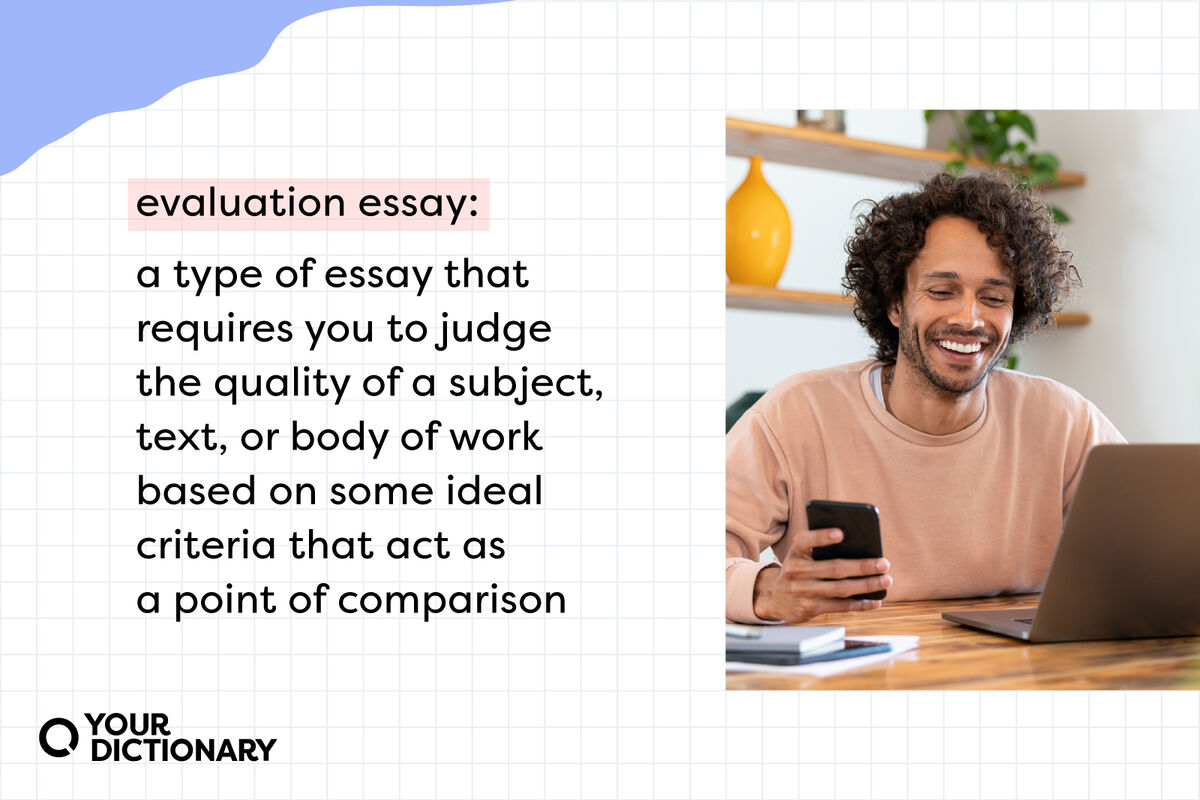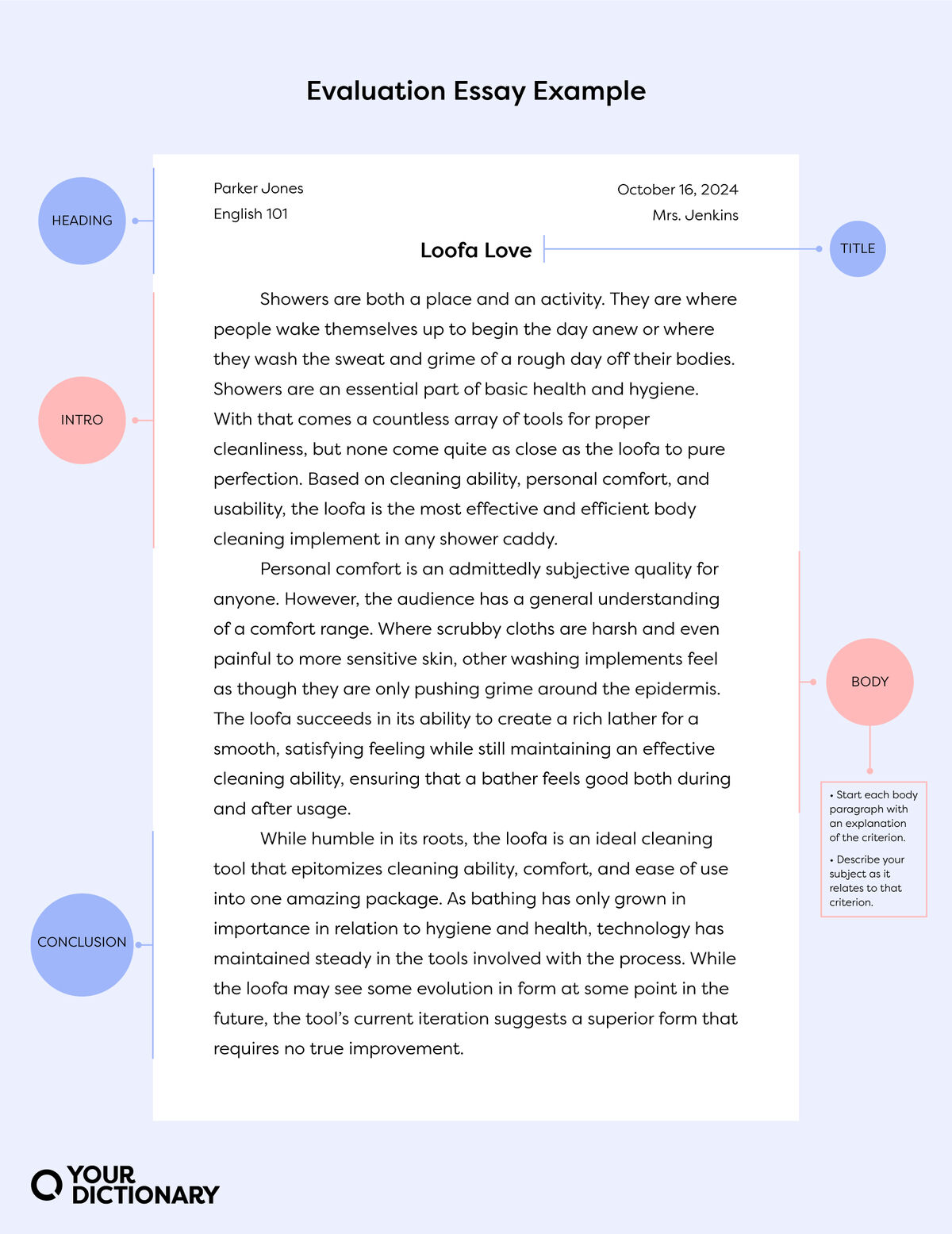
If you’ve ever had a slice of pecan pie and thought, "Wow, this is the best dessert I’ve ever had," you already have experience with the first step in evaluation. Now you just have to build out all the qualities that make that pecan pie so good (amazing crust, perfectly sweet filling, fresh pecans) and you’ve basically got a whole evaluation essay on your hands. Once you get a good handle on evaluation essays, writing one will be as easy as pie.
What Is an Evaluation Essay?
An evaluation essay is a type of essay that requires you to judge the quality of a subject, text, or body of work based on some ideal criteria that act as a point of comparison.
For example, keeping with the pie theme, what are the components that you expect out of an ideal pie? What do you think makes a good crust or filling? How does the pecan pie compare to that ideal pie?
Evaluation essays are subjective. They look at how you feel about a specific thing. However, even if it’s all based on your opinions, an evaluation essay still requires some form of contextual evidence to back up those opinions. Some people might see an evaluation essay as equivalent to a review.
What’s the Difference Between an Evaluation Essay and a Critical Analysis Essay?
At first blush, it’s pretty easy to mix up evaluation and critical analysis essays, and some teachers and instructors might conflate the two. They definitely have some overlap, so it’s understandable. They’re both a look at whether something is “good” or “bad.”
The main difference is in that word analysis. With a critical analysis essay, you’re doing a close reading of a subject or text, really getting into the nitty gritty, while also using other texts to back up your findings. For example, with a poem, you might get deep into a line-by-line reading, going into the diction, word choices, and metaphors.
An evaluation essay is a little more straightforward than that. You might naturally do some analysis, but you’re not doing a particularly close reading of the text. For example, your evaluation of a poem might look at some metaphors and word choice, but that’s all in service of saying whether that poem is good or bad.
The General Structure and Format of an Evaluation Essay
With some potential variation, you’re looking at three main components of an evaluation essay:
- Your judgment/opinion
- The criteria with which you are judging a subject
- Evidence to support that judgment
Beyond that, you can pretty much run as far and as wide as you want with it. For a typical five-paragraph essay, you’ll cover three criteria (one for each of the body paragraphs). For longer essays, you’ll maybe look at other criteria or even consider opposing opinions.
A general evaluation essay outline might look like:
- Introduction
- Introduce the subject that you’re evaluating.
- Broadly talk about the criteria you’re using to evaluate the subject.
- Present a thesis statement summing up your opinion on the subject.
- Body paragraph #1
- What is your first criterion?
- How does the subject match up to that criterion?
- Provide evidence to support that.
- Body paragraph #2
- What is your second criterion?
- How does the subject match up to that criterion?
- Provide evidence to support that.
- Body paragraph #3
- What is your third criterion?
- How does the subject match up to that criterion?
- Provide evidence to support that.
- Conclusion
- Restate the thesis and your opinion on the subject.
- Try to look beyond your opinion. (Could the subject be improved? Does your opinion on the subject address larger questions?)
Evaluation Essay Example
Now that you have all the basics that go into how to write an evaluation essay, you can go off and write one yourself. But don’t worry, we know that seeing one in action is a good way to get a better idea of what to do (and what not to do).

Evaluation Essay Introduction Paragraph Example
The usual rules apply here, mainly making sure your introduction hooks in the reader. What makes that easy in this case is that you’ll be stating a judgment of some kind. Opinions almost always draw people in, but try to make that opinion a little more engaging than “this thing is good/bad.”
Showers are both a place and an activity. They are where people wake themselves up to begin the day anew or where they wash the sweat and grime of a rough day off their bodies. Showers are an essential part of basic health and hygiene. With that comes a countless array of tools for proper cleanliness, but none come quite as close as the loofa to pure perfection. Based on cleaning ability, personal comfort, and usability, the loofa is the most effective and efficient body cleaning implement in any shower caddy.
Sample Evaluation Essay Body Paragraph
Start your body paragraphs discussing the criterion that you’re using to evaluate the subject. The reader needs to know what you mean by a “good” loofa. Once you define that, you can compare the subject to that criterion and use evidence to support your judgment.
Personal comfort is an admittedly subjective quality for anyone. However, the audience has a general understanding of a comfort range. Where scrubby cloths are harsh and even painful to more sensitive skin, other washing implements feel as though they are only pushing grime around the epidermis. The loofa succeeds in its ability to create a rich lather for a smooth, satisfying feeling while still maintaining an effective cleaning ability, ensuring that a bather feels good both during and after usage.
Example of an Evaluation Essay Conclusion Paragraph
This is where you sum it all up. Conclusion paragraphs can still be tricky for even the most experienced writers. Restate your thesis (and your opinion), and try your best to think outside the bounds of just your essay assignment. Why does anything you just wrote matter, either to you personally or to the world at large?
While humble in its roots, the loofa is an ideal cleaning tool that epitomizes cleaning ability, comfort, and ease of use into one amazing package. As bathing has only grown in importance in relation to hygiene and health, technology has maintained steady in the tools involved with the process. While the loofa may see some evolution in form at some point in the future, the tool’s current iteration suggests a superior form that requires no true improvement.